I hit the jackpot! The inspiration jackpot, that is. I was searching for insight into the creation process of Art Nouveau artists when I came across an obscure book from 1903—right in the middle of the Art Nouveau period. Art Nouveau, for those not familiar with this art movement, was triggered by a desire to return to quality and original handcraftsmanship. It was inspired by nature and is recognizable by its sweeping curves and flowing lines. Flora, fauna and female were popular themes. My previous post My Art Nouveau Love Affair provides more background with lots of examples.
I found the book online. It is in French and is called “Etude de la Plante : Son application aux industries d’art”. Well, actually the full title is much longer, translated into English it is “Study of the Plant: Its Application to the Art Industries: Stencil, Wallpaper, Fabrics, Ceramics, Marquetry, Carpeting, Ironwork, Bookbinding, Lace, Embroidery, Stained Glass, Mosaic, Jewelry, Bronze, Goldsmithing”. The author and illustrator is Maurice Pillard (M.P.) Verneuil (1869 – 1942) who was an artist and decorator in the Art Nouveau movement. The book is generously illustrated with beautiful drawings. The illustrations are a lifesaver since my high school French is sketchy and using an online translation tool is painfully slow.
Here’s an example of an illustration of the wisteria plant. Translated into English, the caption says “Wisteria Climbing shrub stretching 10m high. Yellow green leaves. Very pale purple flowers. Flowers in April-May.”
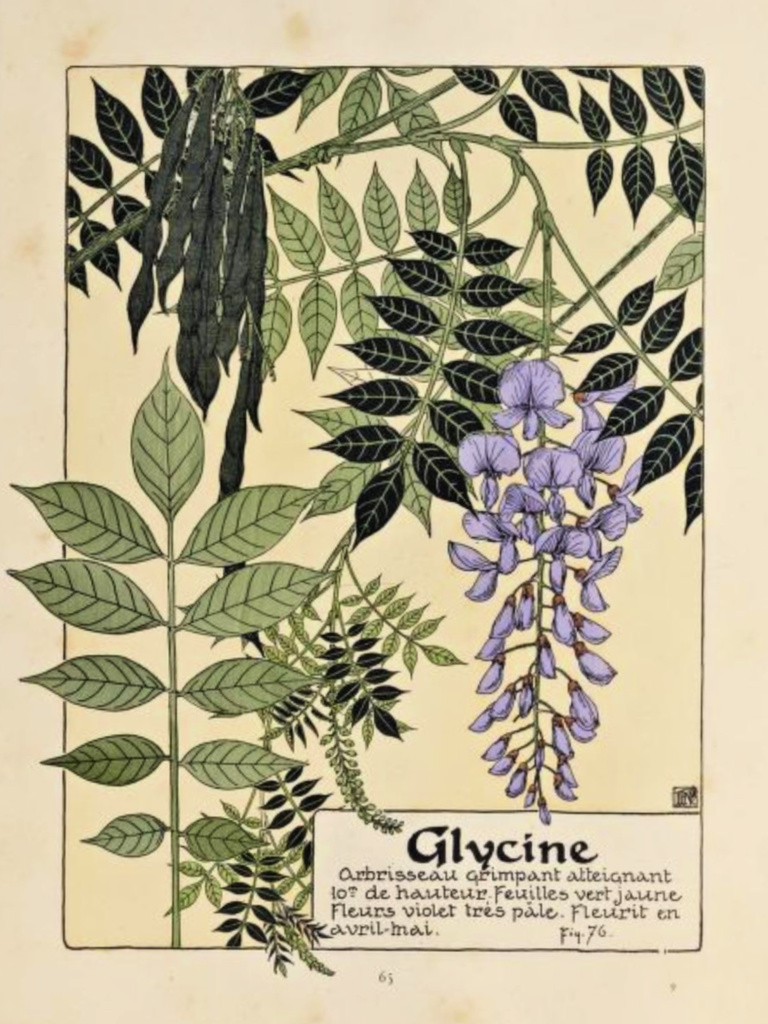
There are about 100 Illustrations of plants and flowers similar to this one. They range from showy flowers like the Bearded Iris to gentle favorites like Lily of the Valley to common plants like Ivy and Corn. But what makes this book special is the way Verneuil studies a plant and then interprets it into art applications. For instance, Verneuil takes the above Wisteria plant study and interprets it as a tapestry to surround a door frame.

I’ve had the good fortune of seeing some amazing Art Nouveau creations in person. One of those, the below hair comb by Rene Lalique, features wisteria. This gorgeous work of art is made of horn, gold, glass, enamel and diamonds. It is displayed at the Calouste Gulbenkian Museum in Lisbon, Portugal. More of this amazing collection is visible in my post Lavish Lalique in Lisbon.
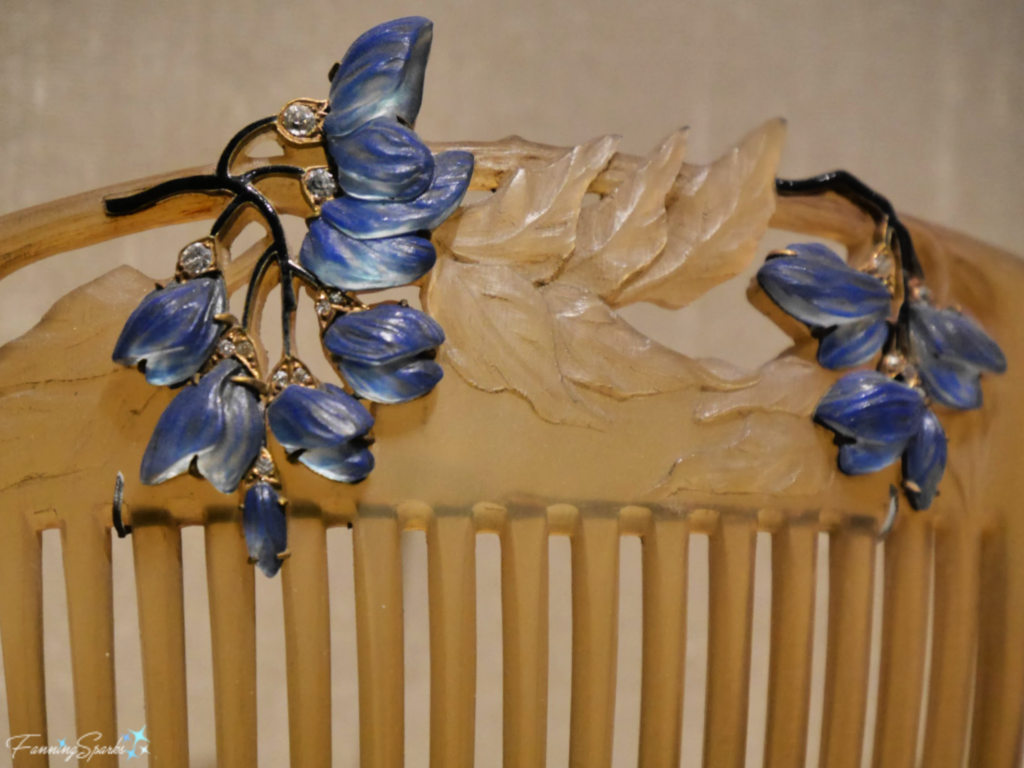 And how could I ever forget the Wisteria lamp? This masterpiece of leaded-glass art by Clara Driscoll is on display at the Morse Museum in Winter Park, Florida. More Art Nouveau stained glass gorgeousness can be seen in my post Clara and Mr Tiffany: The Backstory.
And how could I ever forget the Wisteria lamp? This masterpiece of leaded-glass art by Clara Driscoll is on display at the Morse Museum in Winter Park, Florida. More Art Nouveau stained glass gorgeousness can be seen in my post Clara and Mr Tiffany: The Backstory.
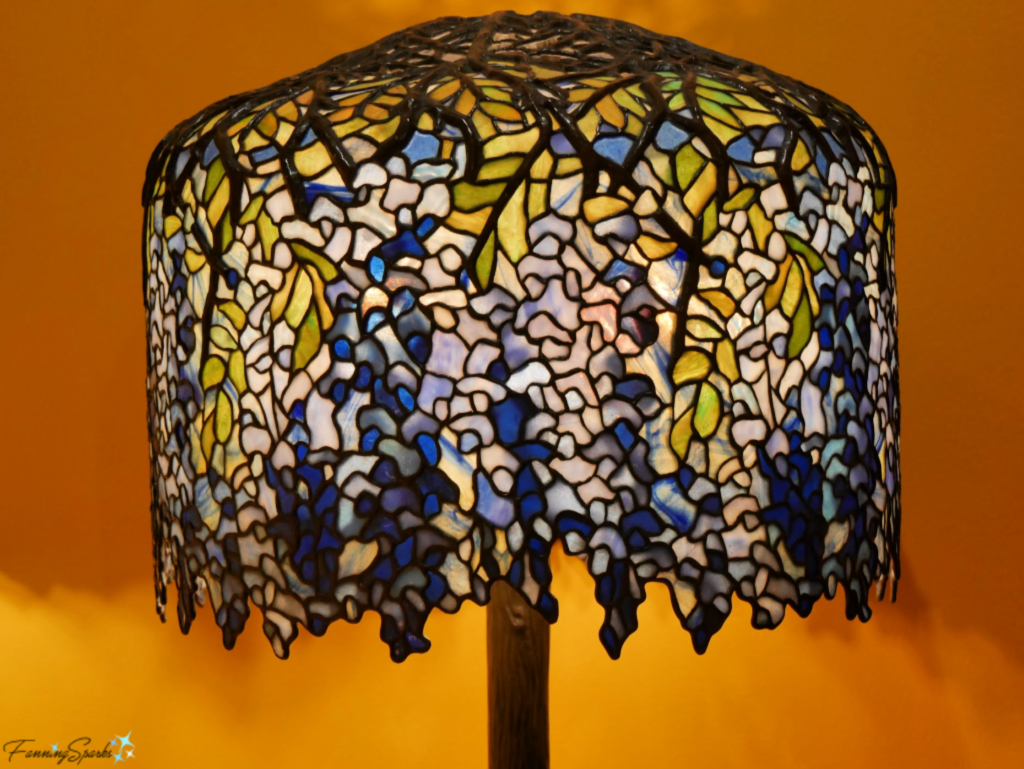
It’s fun and informative to take an example through the creative process from end to end—from its original natural form to the plant study to the suggested interpretations to an executed application. I’ll walk through the process with the flamboyant Fuchsia as an example. Most people know the Fuchsia as an annual container plant.

M.P. Verneuil, however, takes it much further. Here is his detailed study of the Fuchsia plant including its flowers, leaves and growth habit.
 Throughout the book, Verneuil suggests a range of interpretations for the Fuchsia including: 1. Napkin Ring 2. Decorative Vase 3. Stencil Border.
Throughout the book, Verneuil suggests a range of interpretations for the Fuchsia including: 1. Napkin Ring 2. Decorative Vase 3. Stencil Border.

I’ve personally seen the Fuchsia applied in two very different Art Nouveau works of art. This beautiful glass vase, spotted at the Corning Museum of Glass in Corning, New York, is made of blown glass which has been enameled and engraved.
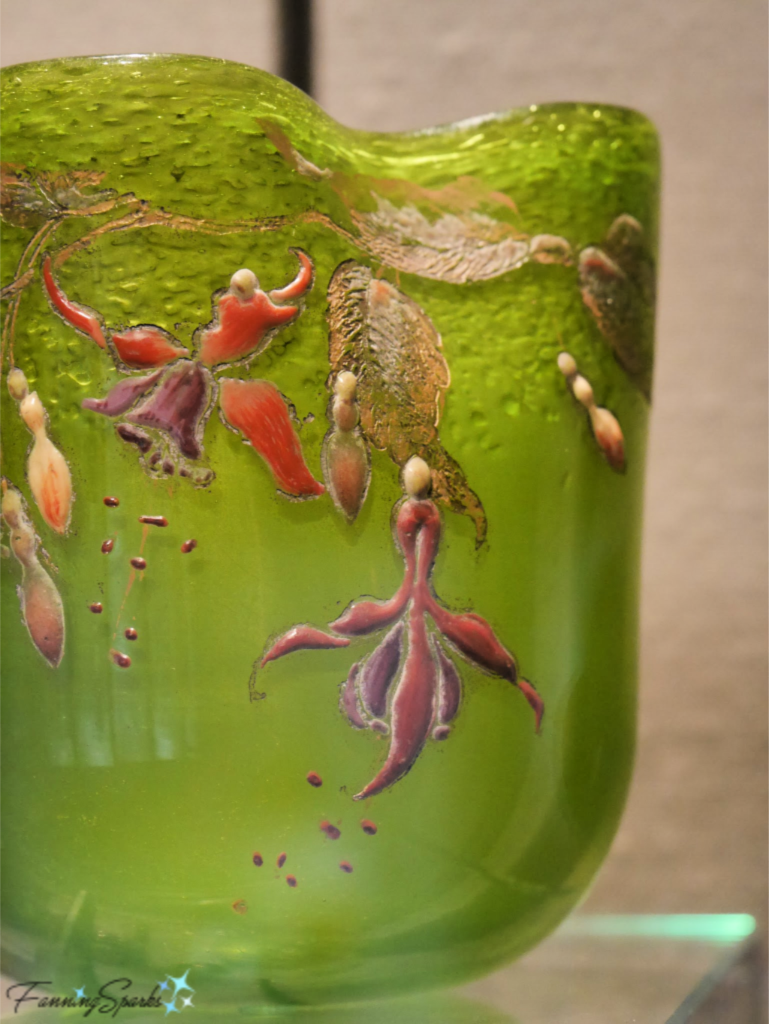
This second example of Art Nouveau artwork featuring the Fuchsia is extraordinary. I spotted it at the Musee d’Orsay in Paris, France many years ago. It was described as “Cheminée et trumeau” and came from a private lounge in the former Café de Paris. The entire piece is lovely but the Fuchsia light fixtures are spectacular.
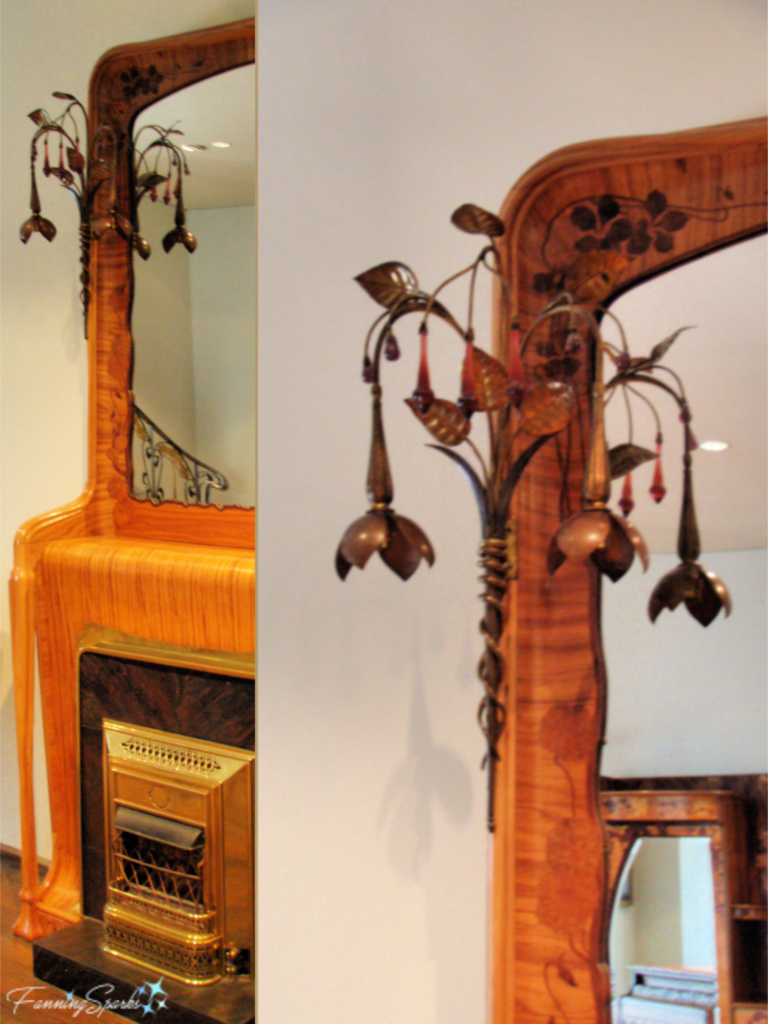
Sunflowers, like those pictured at the top of this post, are a good candidate for a second walk through of the creative process. They are easily recognized by their distinctive form and color. Here is one of Verneuil’s plant study illustrations of the Sunflower.

In the below illustration, Verneuil interprets the Sunflower as a cheerful two-tile border.
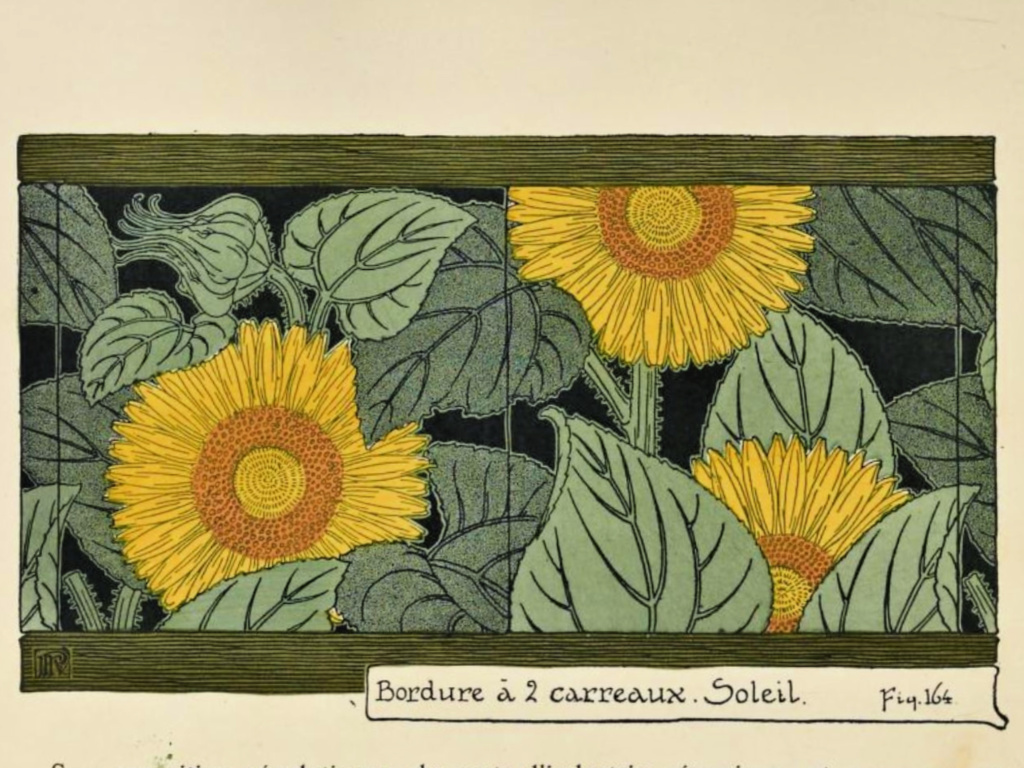
His interpretation reminds me of the below ceramic relief tiles which Antonio Gaudí used to line the window boxes on the rooftop terrace of Casa Vicens.
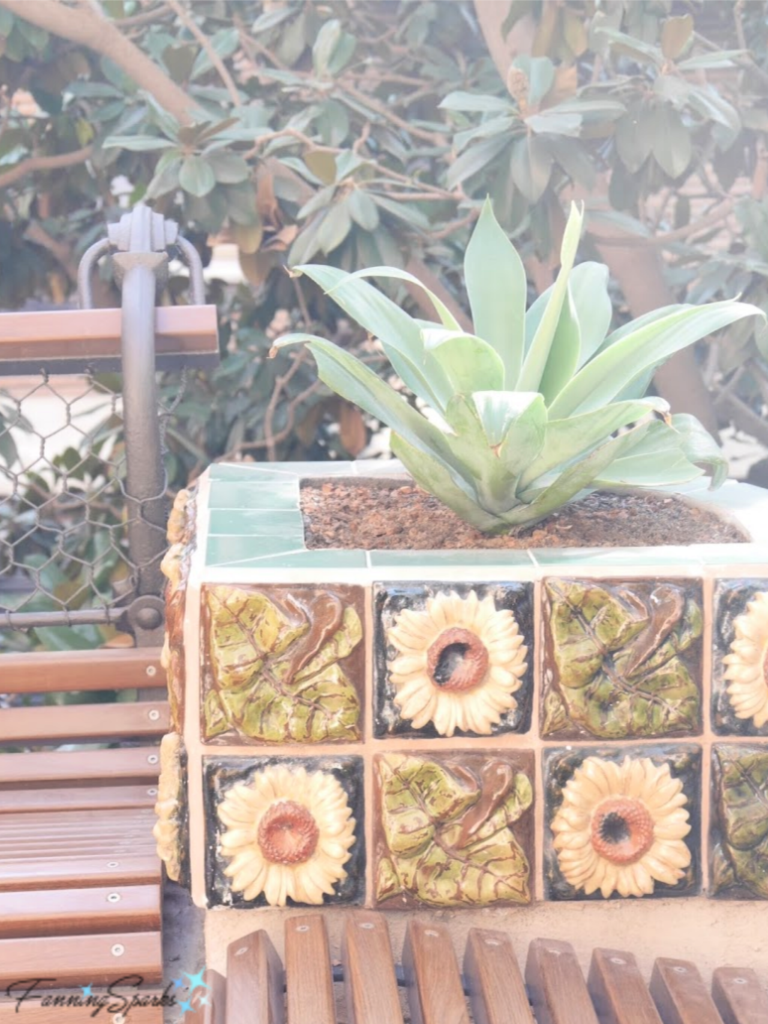
The Casa Vicens, in Barcelona Spain, is considered Gaudí’s first masterpiece. This summer house, built for the Vicens family between 1883 and 1885, is chockful of elements inspired by nature. That should come as no surprise since Gaudí is remembered as a “.. observer of nature, and great architect … [his] architecture and designs did not merely mimic nature; they were the result of attentive and intelligent observation of natural forms, structures and functional characteristics.” I’ve shared more of Gaudí’s spectacular work in the post Gaudí’s Trencadis Mosaics.
To wrapup, I’ll share one last example from Verneuil’s book. This lovely illustration is his plant study of the White Water Lily.
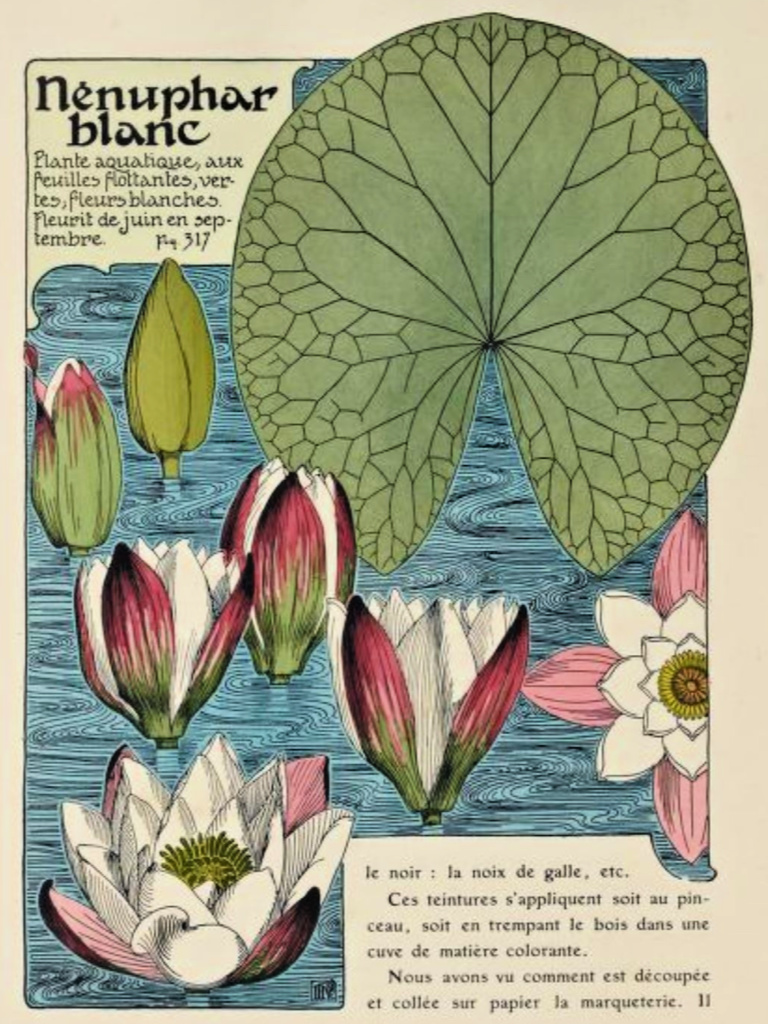 Verneuil suggests several interpretations of the Water Lily including: 1 Tiles 2 – Marquetry and 3 – Wallpaper Border.
Verneuil suggests several interpretations of the Water Lily including: 1 Tiles 2 – Marquetry and 3 – Wallpaper Border.
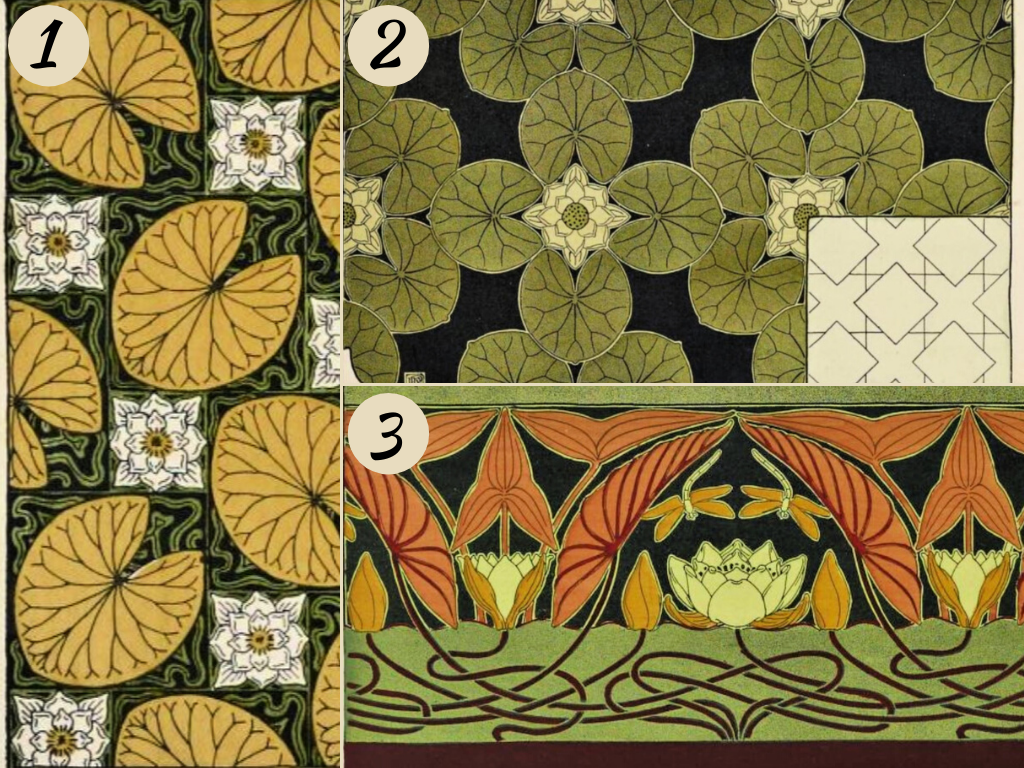
More Info
M.P. Verneuil’s book “Etude de la Plante: Son Application aux Industries d’Art” is available for free with no copyright restrictions on Archive.Org.
This post builds upon my last post Form by Mother Nature which explores a variety of organic forms. Form is one of the 7 elements of design along with color, pattern, texture, space, line and light. The Interior Design Academy explains these elements must work in harmony to create an aesthetically pleasing interior. Other posts in this series include:
. Color Palette by Mother Nature
. Patterns by Mother Nature
. Texture by Mother Nature and Decorating with Texture.
Art Nouveau is a recurring theme on the FanningSparks blog. You can read more about it in the following posts:
. My Art Nouveau Love Affair
. Lavish Lalique in Lisbon
. Clara and Mr Tiffany: The Backstory
. Lines and Patterns in Wrought Iron
. Gaudí’s Trencadis Mosaics.
Today’s Takeaways
1. Consider identifying a master artist(s) from an art style that interests you.
2. Delve into the work of master artists you admire for insight and inspiration.
3. The Internet Archive at Archive.Org is a great online resource.


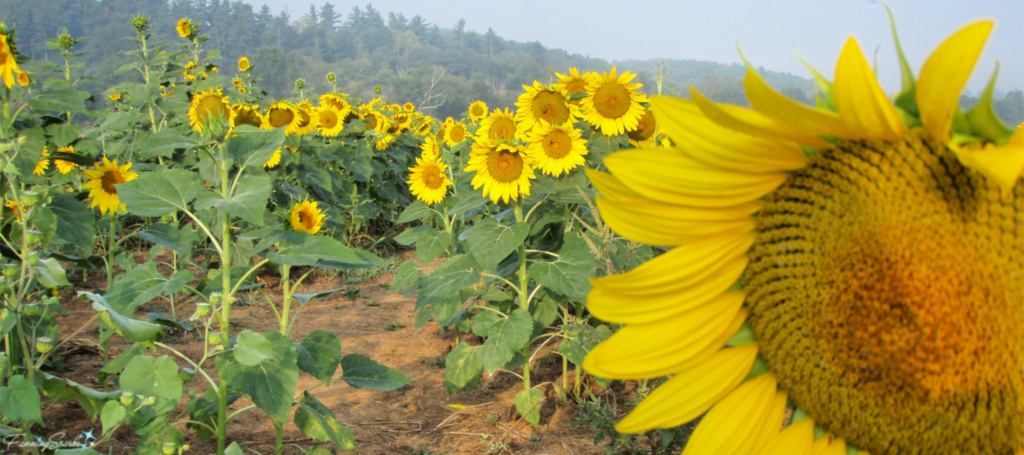


Comments are closed.